Illinois’ 4th Congressional District has been cited in a number of news stories recently as an example of a partisan or racially gerrymandered district. But it’s not a good example, and let me explain why.
Let’s start with the basics of how redistricting is done in Illinois.
Every 10 years, after the U.S. Census is complete, the Illinois General Assembly uses the new population data to redraw the boundaries of congressional and legislative districts. The Illinois House and Senate agree on the maps and the governor approves or vetoes them.
So drawing the 4th Congressional District was simple, right? Not quite.
In 1990, Census data showed that the Latino population in Chicago had increased dramatically, to about 20 percent of the state’s overall population. That big increase argued for the creation of a Latino-majority congressional district. Groups such as the Illinois Latino Committee for Fair Redistricting advocated for a Latino-majority district that would include the two largest Latino populations in Chicago: Mexican Americans and Puerto Ricans.
With that in mind, Republican members of Congress from Illinois, including then-Rep. Dennis Hastert, filed a federal suit in 1991 against the state Board of Elections — Hastert v. Board of Elections. The suit contended that our state’s congressional district boundaries were unconstitutional because they did not accurately reflect population changes revealed by the Census.
Additional plaintiffs included the Mexican American Legal Defense and Education Fund, the Chicago Urban League, the Roger Baldwin Foundation of the ACLU of Illinois and the Harold Washington Party.
The federal court determined that the maps were, in fact, unconstitutional and then considered two proposed alternative remap plans. The court favored a Republican-sponsored map that created a super-majority Latino congressional district, the 4th, today known as the “earmuffs” district. That map also preserved three super-majority African-American congressional districts in the region.
The Republican map — and this is the heart of the matter — met necessary constitutional and legal criteria to provide “fairness to the voting rights of racial and language minorities,” as mandated by Section 2 of the Federal Voting Rights Act.
So why the unusual earmuffs shape?
Simply put, people with shared interests do not live in neatly squared areas. The 4th Congressional District was created to reflect that reality.
Chicago’s two Latino-majority populations were concentrated in the neighborhoods of Logan Square, Humboldt Park, Pilsen and Little Village.
If the district had been shaped in that way for any reason other than to protect the shared interests of a minority group like Latinos, it probably could be considered an example of cynical, partisan gerrymandering. But, in this case, it gave a strong Latino community the chance to elect someone of their own choosing to Congress.
The 4th Congressional District also cannot fairly be cited as an example of racial gerrymander, which is the act of deliberately diluting and disenfranchising racial minorities to prevent them from electing a preferred candidate.
The 4th Congressional District was drawn to give Latinos a chance to elect someone of their choosing — while also not diluting the interests of nearby African-American communities.
Gerrymandering often is done to give one party an unfair electoral advantage or to dilute the voting power of a racial minority. It can determine the outcome of an election before a single vote is cast.
But the “earmuffs” district was drawn for quite the opposite of reasons. It is better understood as an example of how the aims of the Federal Voting Rights Act and the interests of minority groups can be preserved and protected. The 4th Congressional District is the only Latino-majority district in the Midwest.
So what’s next?
We’re coming up on another national census. Census Day is April 1, 2020. Once this latest count is completed, the Illinois General Assembly will redraw congressional and state legislative district boundaries to reflect population changes.
Will certain legislators again go behind closed doors to draw our maps and dictate our democracy for the next ten years?
Or will we demand to be part of the process, fighting for the fair representation in government that we all deserve?
This opinion was written by former CHANGE Illinois Advocacy Director, Liliana Scales. CHANGE Illinois, a nonpartisan organization that advocates for ethical and efficient government.
This opinion originally appeared in the Chicago Sun-Times
